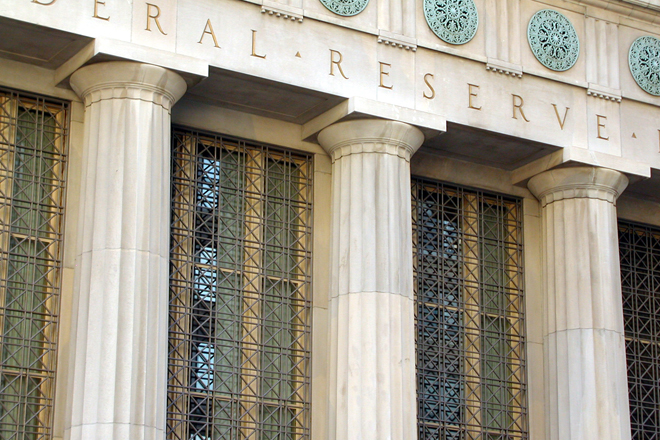Quick view: Fed’s dovish stance

With the US economy potentially slowing, the Federal Reserve says it does not expect to raise rates in 2019. Nick Maroutsos, Co-Head of Global Bonds, explains what that could mean for investors.
Key takeaways:
- The Federal Reserve (Fed) announced it would leave its benchmark rate unchanged at 2.25% to 2.50%, and indicated that no rate hikes were likely in 2019.
- In addition, the Fed provided further detail around its balance-sheet reduction programme, saying that the central bank would halt the run-off of Treasury holdings at the end of September.
- We believe the recent announcement suggests that the Fed is doubling down on its dovish stance, with potential benefits for the front end of the US yield curve.
Today, the Federal Reserve (Fed) doubled down on its dovish stance, not only leaving its benchmark rate unchanged at 2.25% to 2.50% but also indicating that no rate hikes would be likely this year. In December, the Fed had projected that as many as two rate hikes could be possible in 2019.
Speaking at a press conference following the two-day Federal Open Market Committee meeting, Fed Chairman Jerome Powell noted that despite mixed to slightly positive economic data points in the US, expectations for future economic growth have softened and that the long-term outlook for inflation remains subdued.
Policy reversal
Our core view is that the Fed’s next move will be to cut rates. The global environment faces a number of geopolitical risks, including but not limited to US-China trade tensions, European political challenges and Brexit negotiations.
Consequently, the Fed is taking a more cautious outlook on the US economy. In December, the last time the central bank updated its quarterly economic forecast, the Fed projected that the US economy would expand by 2.3% in 2019. Now, it expects growth of only 2.1%.
In addition, the Fed confirmed that it would slow the pace of its balance sheet reduction programme starting in May and halt the run-off of Treasury holdings at the end of September. We view this step as further evidence of the Fed’s newly adopted dovish stance. What’s more, we believe central banks elsewhere are likely to follow suit by stepping back from their own efforts at monetary tightening.
Implications for investors
In our opinion, the Fed’s actions favour the front end of the US yield curve, with investors potentially benefiting from rate cuts in 2019 or 2020 (bond prices move opposite to yields). We also think opportunities are present in high-grade US credit.
At the same time, longer duration opportunities may be present in regions such as Asia ex-Japan and countries such as Australia and New Zealand, where rates could also fall in 2019, but 10-year yields trade comparatively higher than those in many developed markets. These economies operate on different economic cycles, helping to potentially diversify income sources for investors.
These are the views of the author at the time of publication and may differ from the views of other individuals/teams at Janus Henderson Investors. References made to individual securities do not constitute a recommendation to buy, sell or hold any security, investment strategy or market sector, and should not be assumed to be profitable. Janus Henderson Investors, its affiliated advisor, or its employees, may have a position in the securities mentioned.
Past performance does not predict future returns. The value of an investment and the income from it can fall as well as rise and you may not get back the amount originally invested.
The information in this article does not qualify as an investment recommendation.
There is no guarantee that past trends will continue, or forecasts will be realised.
Marketing Communication.